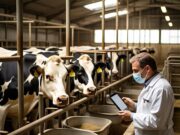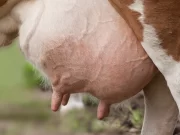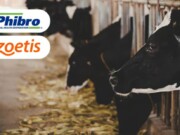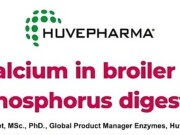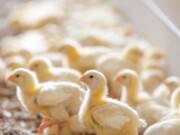
Avian Influenza a zoonotic disease which is also known as Avian Influenza, Bird flu, or fowl plague. Avian Influenza is highly infectious /contagious zoonotic viral disease mainly of wild birds and domestic birds. This disease spreads very fast and can cause huge economical losses in poultry. The losses may be due to culling of birds and hampering or stoppage of international trade of poultry and poultry products which will affect the total economics of the poultry industry. As it is a zoonotic disease so it can transmit to the human beings who are in close contact with birds.
India has emerged as a global hotspot for AI. It is also habitat for migratory waterfowl and habitat for several resident waterfowl species throughout the year. India lies at the heart of Central Asian Flyway (CAF), which spans 30countries and covers 279 populations of 182 migratory water bird species. Last year in Jan 2021 Indian poultry industry suffered a lot of outbreaks of AI. Outbreaks were confirmed in 9 states in poultry birds and 12 states for other migratory and wild birds. As per the reports the overall loss of the poultry industry at the national level is estimated at about Rs. 3400 Cr due to bird flu as per financial expert from the poultry industry (Ref. TOI Hyderabad 2021).
ETIOLOGY
Infectious virus belongs to Orthomyxovirus family, single stranded RNA virus. There are three types A, B and C which are differentiated by internal viral proteins. Influenza A type is responsible for human influenza and avian disease. Influenza B type is human only and type C causes milder disease and swine also.
Influenza A is more important for poultry. It is subtyped on basis of viral envelope glycoprotein hemagglutinin (HA) and Neuraminidase (NA). There are 16 different HA antigens (H1 to H16) and 9 different NA antigen (N1 to N9). Influenza A virus can infect variety of domestic and wild birds. Avian Influenza in domestic chicken and turkey is classified according to disease severity as HPAI (Highly Pathogenic Avian Influenza) and LPAI (Low Pathogenic Avian Influenza).
HPAI is highly virulent and it can cause near about 100% mortality in chicken. All subtypes found in poultry but subtype H5 and H7 are seen more as cause of outbreaks. All the birds including domesticated birds are susceptible to avian influenza virus but migratory birds as water fowls and wild ducks are natural reservoirs of avian influenza virus. Chicken and turkey are also susceptible to virus and can cause fatal infection. In recent studies shows that the low pathogenicity virus (LPAI) can mutate to highly pathogenic virus. Haemagglutinin protein mediates attachment to and entry of the virus into host bell by binding to sialic acid receptors on cell surface. Influenza A virus is genetically labile and can escape from host defense system. This virus lacks mechanism of proofreading and repair the error which occur during replication. This change, uncorrected error remains and genetic changes happens during passage through human and animals, and the original strain changes to a new antigenic variant. This changes in the antigenic component of Influenza A virus are known as “antigenic drift”.
When two viruses from same host system or originally coming from different host replicate in the same cell and reassort or swap genetic material. In this process changes in NA or/and HA protein takes place. Such abrupt changes in virus antigen is called as “antigenic shift “. The virus originates from this mechanism creates a novel virus subtype that differ from both original viruses which may have capacity to completely evade the immunity of host.
TRANSMISSION AND SPREAD

In winter more incidences of HPHI are seen, this may be due to agricultural practices, environmental changes, migratory birds flying from one place to another, water fowl and duck migration
Low pathogenically avian influenza virus is distributed worldwide. Virus may be present in backyard poultry in villages without showing any symptoms but carrier as they directly come in contact with wild birds and ducks. As migratory birds mostly resides near water bodies, so many times the outbreaks of AI are seen more farms in the close proximity of water bodies, lakes, ponds, etc.
HPAI virus arise from mutation of LPAI virus, mainly H5 or H7, and which may cause high epidemics. The incubation period may vary from few days in birds to some days in flock. Virus transmission is due to inhalation or ingestion of infected material.
Spread is due to lack or breaches in farm biosecurity norms, as movement of birds, close contact of flock with wild or migratory bird, contaminated droppings, fomites as equipment, trays, gunny bags and trucks carrying live birds, coops. Airborne transmission is possible between farms but in close distance and not far off distance.
AI virus sheds in feces and respiratory secretion of birds. The aquatic birds as water fowl and duck fecal material contain large amount of virus.Once AI virus enters poultry flock it can spread on the farm by both fecal-oral route and aerosols due to close proximity of birds. House flies can act as mechanical vector/carrier but not far distance.
CLINICAL SIGNS
LPAI – Low pathogenic virus causes mild illness in poultry and shows symptoms like decrease egg production, misshaped eggs, decrease fertility or hatchability in breeder flocks, sneezing, coughing and ocular / nasal discharge in affected flocks, swollen infraorbital sinus, decreased feed and water consumption and gradually increase trend in mortality. HPAI – Highly pathogenic virus shows severe illness in poultry and chicken. Marked depression, decreased feed and water intake and often neurological and respiratory signs are seen, sudden heavy mortality occurs in flock. Signs as coughing, sneezing, sinusitis, blood tinged oral nasal discharge, ecchymoses on shank and feet, edema and cyanotic lesions on unfeather skin i.e., on wattles and comb, diarrhea, drop in egg production and misshaped eggs.
POST MORTEM LESION
LPAI – Rhinitis, sinusitis, congestion and inflammation of trachea and pneumonia in some birds, hemorrhagic ovaries, involuted or degenerated ova in reproductive system in layer birds, airsaculities, peritonitis is also seen in birds.
HPAI – Classical symptoms of oedema and cyanotic lesions on head, comb and wattle. Gross lesions may not be classical lesions as bird die per acutely. Hemorrhagic lesions on shank and legs.
PREVENTION, CONTROL AND BIOSECURITY
In some countries the live or killed vaccine is available and regularised. It is depend upon the Regulation from AH dept. Govt. of India, GOI has not permitted for Poultry AI vaccination in India.
So, control through biosecurity as there is no effective and economical treatment in poultry.
VIRUS EFFECTIVE DISINFECTION
AI virus is susceptible to various disinfectant and can be destroyed with Sodium hypochlorite solution, Ethanol 60- 95%, QAT, Aldehydes (Glutaraldehyde, Formaldehyde), phenols, povidone iodine.
VIRUS CAN SURVIVE
In dry/wet faces for 8wk at 40 C but 18hrs at 420 C or for 24hrs at 370 C, so temperature increases virus will get destroyed. At 00 C or sub-zero temperature as in frozen lakes or water bodies for 30days, 6 days at room temp i.e at 370 C. On plastic virus can stay for 24-48 hrs, on cloths and paper 8-12 hrs. But it can survive or stary alive for decades in frozen lakes, snow.
FOR EFFECTIVE BIOSECURITY
- Isolation
- Traffic control
- Decontamination/Sanitation
SOME OF THE BASIC BIOSECURITY MEASURES

- Keep the poultry houses from wild birds, pests and other livestock. Don’t grow any fruit or flower plants near the poultry shed which may attract wild birds which can be carrier for AI.
- Keep visitors to a minimum. Allow only those people who are important to visit your farm. Make sure that they use proper biosecurity measures before entering the flock.
- Use foot bath and dedicated shoes for visiting the flock. Use some good disinfectant in foot bath which can be TM effective in presence of organic matter. (Prophyl 75)
- Make sure you have effective pest control program mainly rodent and insect control.
- Do not visit any other farm and don’t keep any birds or desi birds at farm premises. Keep close watch if any of the workers coming from outside are keeping any birds at their house, as far as please avoid.
- Don’t bring any equipment or feed from other poultry farm. If equipment is brought outside, please ensure they are properly cleaned and disinfected with effective TM disinfectant. (Benzo DT).
- Ensure your flock is healthy and if any problem get the help from veterinarian.
- Once you dispose of any flock, please ensure you remove all litter material properly and dispose of away from the poultry farms.
Cleaning and disinfecting the farm with proper disinfectant is very important to keep the next flock and TM farm away from the disease. (Vulkan S). - All the vehicles coming to farm must be cleaned and disinfected. Use wheel dip for the vehicles entering your TM farm premises. (Prophyl 75 ). But don’t take outside vehicle near to shed or flock.
- In shed Cleaning & Disinfection (C&D) first dry cleaning, then wet cleaning with some detergent / foam (DT TM Foam ) and disinfecting with effective disinfectant or umigation. If possible, take Sanitary break as surface or facility to dry before entering birds in the shed, so keep the shed vacant for 2/3 days, this is to stop multiplication of TM organism and break the cycle. (Benzo DT)



